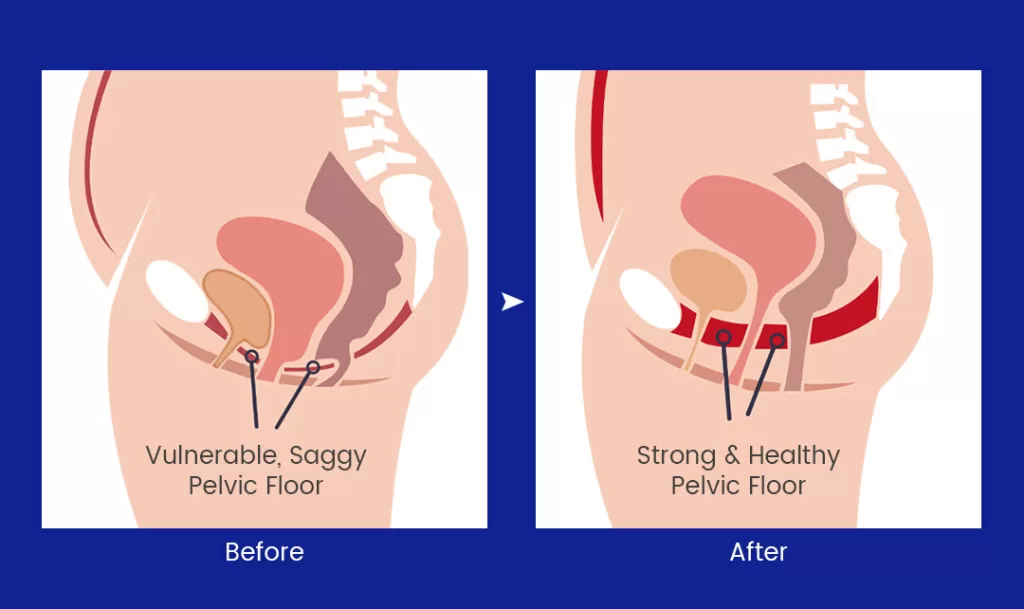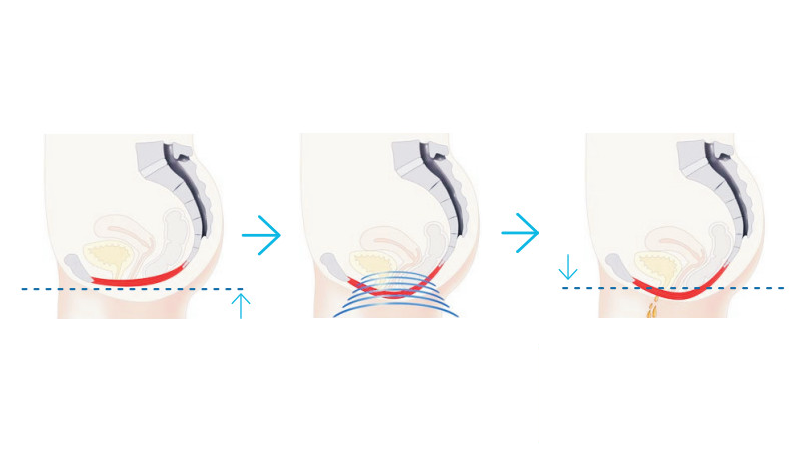Everyone has a pelvic floor, and we don’t care about it unless the problems arise. When these muscles aren’t working properly can be difficult to talk about: urinary and fecal incontinence, pelvic pain, and pain during sex. Yet it play a crucial role in our overall health and well-being. Despite their importance, they are often overlooked until problems arise. In this blog post, we will delve into the significance of pelvic floor muscles, their functions, common issues related to them, and effective treatment options. We'll also introduce you to VitaChair, an innovative pelvic floor muscle exerciser machine that can help maintain your private health.
What are Pelvic Floor Muscles?
Pelvic floor muscles are a group of muscles that form a hammock-like structure at the base of the pelvis. These muscles span the bottom of the pelvic cavity and support the pelvic organs, including the bladder, intestines, and, in women, the uterus. A healthy pelvic floor can contract, squeeze, lift and relax. It has a range of motion just like any other muscle does. It’s just not a very big range of motion.
Where are Pelvic Floor Muscles Located?
The pelvic floor muscles are core muscles that are situated between the pubic bone at the front of the body and the tailbone at the back. They stretch across the pelvis like a supportive sling, encompassing the openings of the urethra, rectum, and vagina (in women). This strategic location allows them to play a vital role in bodily functions such as urination, defecation, and, for women, childbirth.
What is the Function of the Pelvic Floor Muscles?
It serve several key functions:
- Support of Pelvic Organs: They hold the pelvic organs in place, preventing them from descending or prolapsing.
- Control of Bodily Functions: They assist in the control of bladder and bowel movements by contracting and relaxing appropriately.
- Sexual Function: In women, they contribute to sexual sensation and arousal. In men, they are involved in erectile function and ejaculation.
- Core Stability: They work in conjunction with the abdominal and back muscles to stabilize the core and support the spine.
What Can Damage the Pelvic Floor?

Several factors can damage the pelvic floor muscles:
- Childbirth: Vaginal delivery, especially if prolonged or complicated, can stretch or tear the pelvic floor muscles.
- Aging: The natural aging process leads to the muscles' weakening, including those in the pelvic floor.
- Chronic Straining: Persistent straining during bowel movements, heavy lifting, or chronic coughing can stress these muscles.
- Obesity: Excess body weight increases the pressure on the pelvic floor, weakening the muscles over time.
- Surgery: Pelvic surgery, including hysterectomy, can damage these muscles.
- High-impact Exercise: Activities such as running or jumping can put additional stress on the pelvic floor.
What Happens When Pelvic Floor is Damaged?
Damage to it can lead to a range of issues, including:
- Urinary Incontinence: An inability to control urine flow, leading to accidental leakage.
- Fecal Incontinence: Difficulty in controlling bowel movements, resulting in involuntary leakage of stool.
- Pelvic Organ Prolapse: A condition where pelvic organs drop from their normal position, causing discomfort and pressure.
- Sexual Dysfunction: Pain during intercourse, reduced sexual sensation, or erectile dysfunction in men.
- Chronic Pelvic Pain: Persistent pain in the pelvic region due to weakened muscles and associated stress.

How to Treat Damaged Pelvic Floor?
Treating damaged pelvic floor typically involves a combination of lifestyle changes, physical therapy, and medical interventions:
- Pelvic Floor Exercises (Kegels): Regularly contracting and relaxing the pelvic floor muscles to strengthen them.
- Biofeedback: Using monitoring devices to gain awareness and control over pelvic floor muscle activity.
- Electrical Stimulation: Applying mild electrical pulses to stimulate and strengthen the pelvic floor muscles.
- Lifestyle Modifications: Maintaining a healthy weight, avoiding heavy lifting, and managing chronic coughing or constipation.
- Medical Treatments: In some cases, medication or surgery may be necessary to correct severe damage.
Introduce VitaChair for Private Health
For those seeking an effective and non-invasive solution to strengthen their pelvic floor muscles, VitaChair offers a revolutionary approach. VitaChair is a high-tech pelvic floor muscle exerciser machine designed to enhance muscle strength and functionality. Using advanced electromagnetic technology, VitaChair induces deep muscle contractions that are far more intense than those achieved through voluntary exercises like Kegels.
Benefits of VitaChair
- Non-invasive Treatment: VitaChair sessions are non-invasive, painless, and do not require any downtime.
- Efficient Muscle Stimulation: One session can produce thousands of powerful muscle contractions, significantly improving muscle strength and endurance.
- Convenience: Treatment sessions are quick, typically lasting about 30 minutes, making it easy to fit into a busy schedule.
- Effectiveness: Clinical studies have shown significant improvements in bladder control, sexual satisfaction, and overall pelvic floor muscle function after VitaChair treatments.
Who Can Benefit from VitaChair?
VitaChair is suitable for a wide range of individuals, including:
- Women experiencing postpartum pelvic floor weakness.
- People suffering from urinary incontinence.
- Individuals seeking to improve their core stability and overall pelvic health.
As concluded, pelvic floor muscles are vital for maintaining various aspects of our health and well-being. Understanding their functions, the impact of damage, and available treatments can help you take proactive steps to protect and strengthen these essential muscles. With innovative solutions like VitaChair made by PZLASER, you can effectively address pelvic floor issues and enhance your quality of life.






